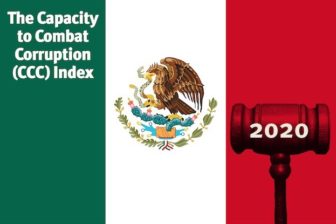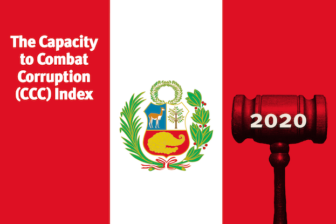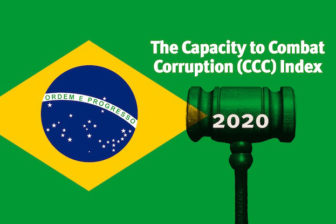When Uruguay was included in this year’s Capacity to Combat Corruption (CCC) Index, we knew that the small South American nation had a good chance of ranking first among the 15 countries analyzed. After all, Uruguay typically performs well compared to most Latin American countries in a variety of governance indicators — including rankings from multilateral banks, research institutions and the private sector.
However, when the results came in, the extent of Uruguay’s superiority was startling. Its overall score was the highest by far (7.78 out of 10), followed by Chile (6.57) and Costa Rica (6.43) – the full report is available here. Also, Uruguay outperformed the rest in a wide array of areas.
Co-developed by AS/COA and the consulting firm Control Risks, the CCC Index looks at Latin American countries’ ability to detect, punish and prevent corruption. Governance – particularly the strength of legal and democratic institutions – is ultimately why countries like Uruguay score at the top, while pushing Bolivia and Venezuela to the bottom of the Index’s ranking.
The CCC Index assesses 14 different sectors of the anti-corruption environment: from the independence and efficiency of courts and enforcement agencies to the relationship between money and politics, the power of investigative journalism and education levels. Uruguay ranked first in 13 of these 14 areas. Even in sectors historically seen as problematic for Uruguay, such as the fight against money laundering, the country surpassed the others.
So, what explains Uruguay’s overwhelming dominance in the CCC Index? Why does Uruguay do so well in these types of exercises?
Uruguay has significantly higher income levels than the Latin American average. And research indicates that richer countries tend to have better tools to fight corruption – in other words, these two areas are very correlated. However, a closer examination exposes important nuances. For instance, according to World Bank data, Uruguay’s GDP per capita at constant 2010 dollar prices is lower than Chile’s and, controlling with purchasing power parity, is similar to Argentina’s. But Uruguay easily outperforms both in the CCC Index – in Argentina’s case, by a wide margin across the board.
Also, Uruguay is a much smaller and homogeneous country than most in Latin America. Over 40% of Uruguayans live in Montevideo, an urban center with a population similar to Brazil’s 13th largest city, Guarulhos, or to Mexico’s Tijuana. Fighting corruption in a small, centralized and urban territory is probably easier than in continental and federal democracies. But again, size alone doesn’t explain much: some Latin American countries that are even smaller than Uruguay have very low anti-corruption capabilities, such as Jamaica or Suriname.
Still, income and geography have certainly contributed to Uruguay’s achievements in the CCC Index. But the key to Uruguay’s success lies elsewhere: the realm of politics.
The democracy marketplace
Since the end of its dictatorship over three decades ago, Uruguay has been able to build a very competitive political landscape, based on strong parties and a policy consensus that favored the strengthening of the rule of law, government transparency and democracy itself. Rafael Piñeiro, an associate professor at Uruguay’s Catholic University and one of the CCC Index’s contributors in the country, argues that the emergence of a modern left – which came to power in the mid-2000s – forced the traditional Colorado and Nacional parties to abandon clientelism to fight for votes. In government, the center-left Frente Amplio largely embraced the economic policies in place, while adding a strong socially progressive perspective – from further expanding the welfare state to legalizing cannabis.
The November presidential election of Luis Lacalle Pou, from the center-right Partido Nacional, ended 13 years of Frente Amplio administration. Lacalle Pou is promising to focus on areas such as public safety and on pro-business policies. Still the transition took place in a civil and celebratory climate unimaginable in most corners of Latin America today, where polarization dominates politics; in Uruguay no one expects a major policy break.
Yet Piñeiro cautions that these gains in accountability “are not set in stone,” and Uruguay still has important work to do. One example is campaign financing, where unclear rules may be increasing opportunities for illegal donations to politicians, including from criminal organizations.
What is more important is that, unlike its geographical features, the political drivers of Uruguay’s success in combating corruption and improving governance could be replicated elsewhere in the region. In this sense, Uruguay should serve as a model to Latin America and beyond. Real progress does not come with the election of anti-corruption crusaders, promising to purge the “corrupt establishment” and weaponizing the topic against political foes. The only way for countries to become better at fighting corruption is through long-term institutional reforms based on a strong democracy, a vibrant civil society and a prosperous business sector.








